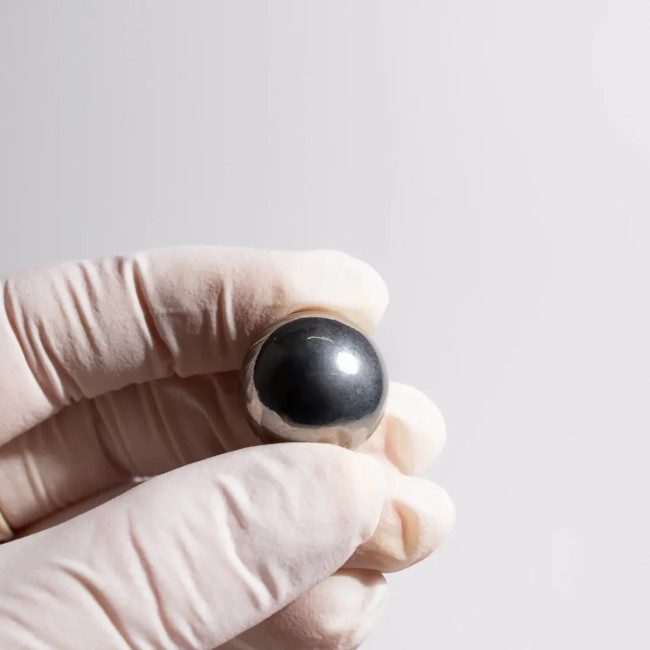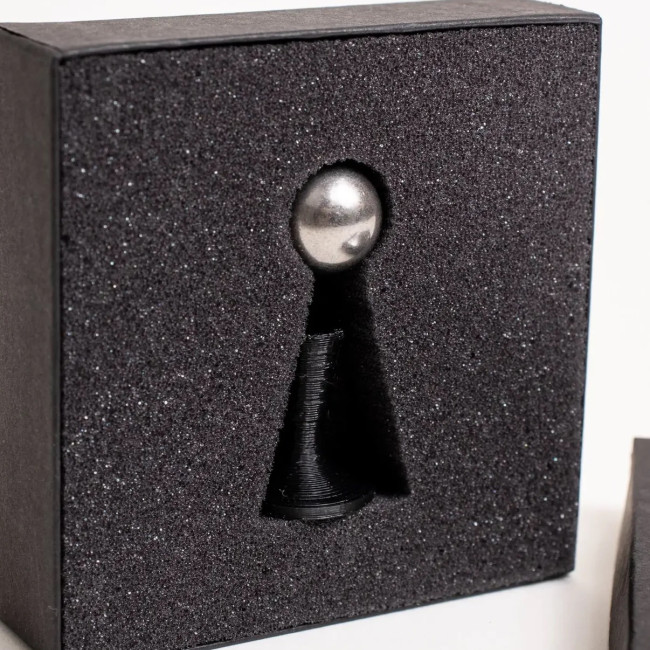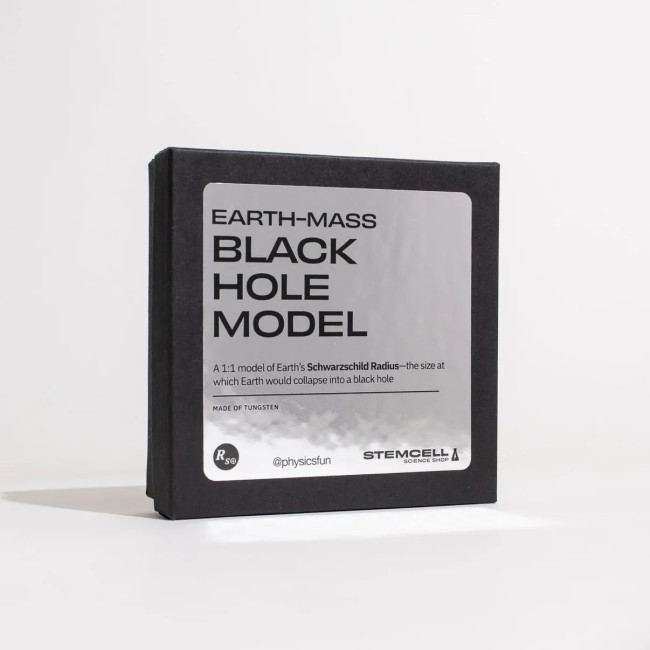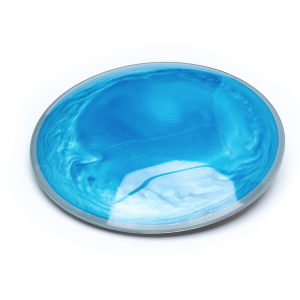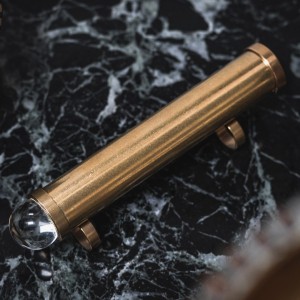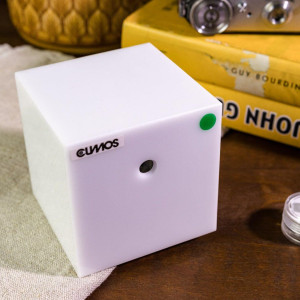Tungsten Black Hole Model
-
£32.50 plus delivery 10 in stock
- Ex Tax: £32.50
If you compress any amount of mass, it becomes denser. If you compress it enough, it will become so dense that light can no longer escape it. This size is the object’s Schwarzschild radius. An object that is compressed smaller than this radius is a black hole. This tungsten sphere has been engineered to have exactly the same radius as the Schwarzschild radius of Earth. If you compressed all of the mass of Earth into the volume of this tiny sphere, it would be so incredibly dense that you would not even be able to see it.
A great aid for comprehending the scale of black holes and their extreme density. Made of tungsten, one of the densest elements in the universe, to help illustrate the high density of such an object. Also makes a great tungsten sample (W, 74) for element collectors. Every object has a Schwarzschild radius proportional to its density: the Sun's is 3km, Jupiter’s is 2.62m, and a hamburger’s is smaller than a single atom. Karl Schwarzschild derived this property in 1915 using Einstein’s recent field equations.
BRAND
STEM CELL SCIENCE
WEIGHT
53.34G
MATERIAL
TUNGSTEN
SIZE
8.87MM
RELATED PRODUCTS
Vortex Dome Desk Toy
Physics Hack
£70.00
CMY Colour Cube
Keiichi Miyazaki
£25.00
Brass Teleidoscope
Roy Cohen
£50.00
Cumos Universe Box
Minori Yamazaki
£200.00


